Contents
- A Short History of Toy Collecting
- Collecting Vs. Investing
- The Ideal Investment
- Our Current Investment Tip
- Buying Goods
- Keeping Your Investments Safe
- Selling Your Items
- Useful Resources
This is the first in our series of how-to guides on buying collectibles as an investment. We’re going to start by looking at toys. I’ll begin by taking a quick look at the factors that have made toys a viable target for investment.
A Short History of Toy Collecting
While it’s likely that people have collected toys pretty much ever since the first toy was made, one of the most significant factors in the road towards modern toy collecting was probably the first mass production of toys.
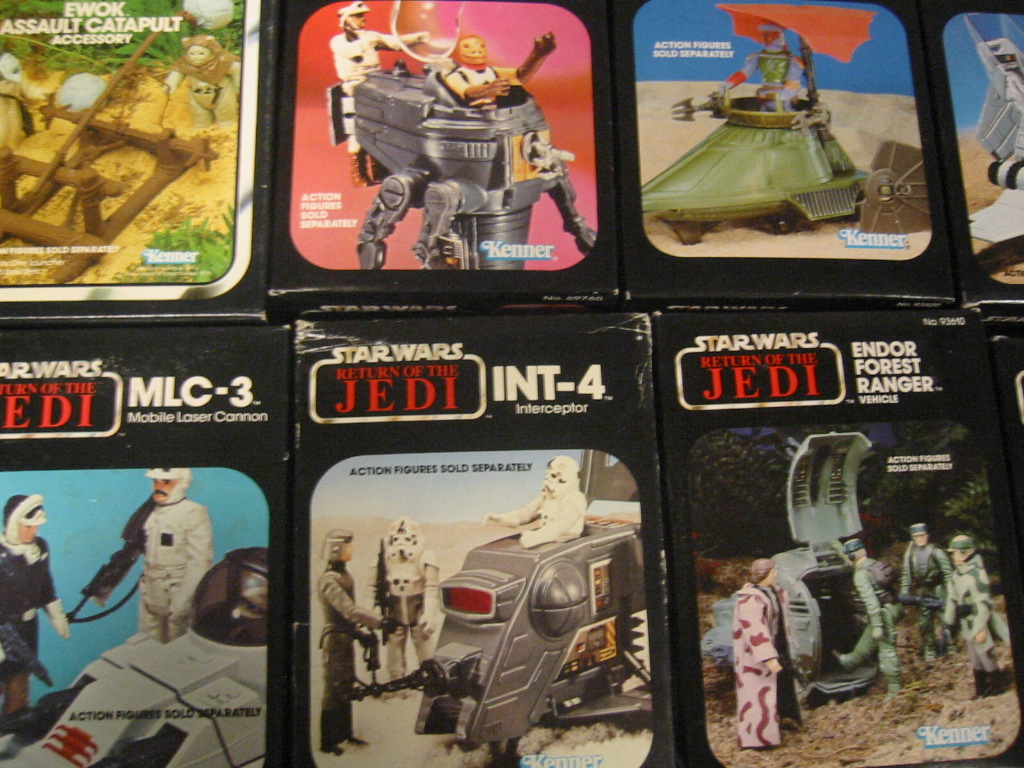
In an interview given at doctorwhotoys.net, Dr Catherine Carey of the Western Kentucky University lists the following criteria that determine collectability: “aesthetic value, standardization, authentication, variation, set completion, nostalgia/notoriety/novelty, affordability, rarity, investment value, community, and a thrill of the hunt”.
Modern mass production, introducing standardized sets of items that collectors can pursue, substantially increasedthe impetus to collect.
This started with tin toys, model soldiers and model vehicles such as train sets and dinky toys, and progressed through to toys made from plastic, like Barbie dolls which first appeared in 1959.
A landmark in the perception of toy collecting was the film Star Wars which was released in 1977. The surprise success of the Film, (famously one of the first marketed Star Wars products was essentially an action figure IOU) spawned an immense range of toys. The long gap between films (and therefore toy releases) after Return Of The Jedi had the effect of driving up the price of some earlier collectibles to impressive levels.
Suddenly toys were widely perceived as valuable collectibles, something that may have, paradoxically, reduced their value as an investment, for reasons that will be discussed shortly.
Collecting vs. Investing
It’s worth pointing out here that this guide is intended to help you in the acquisition of toys as an investment, not as part of a collection, and it’s important that we recognise the difference between the two activities.
Certainly many toy investors start out collecting products that they have an interest in, and this interest can be tremendously valuable for an investor, bringing with it a broad range of knowledge about the products.
However it’s important that, in investing, you donot lose sight of the fact that the objective is to achieve a return on your investment. Collectors may feel compelled to purchase items because of personal preference rather than value as an investment; they may even be ignoring the fact that their particular area of interest is actually a poor choice to invest money into. It’s probably a good idea, therefore, to take a look at some of the factors that make for the ideal collectible.
The Ideal Investment
-
Sealed/Undamaged goods - This is a key factor in the value of toys as a collectible and any listing of collectible toys will be peppered with acronyms such as MOC (Mint On Card) or MISB (Mint In Sealed Box), which has a huge impact on their value. The simple fact is that many toys will be opened and played with, while much of the value of sealed toys comes from their scarcity. Taking the previously mentioned Star Wars collectibles, a quick
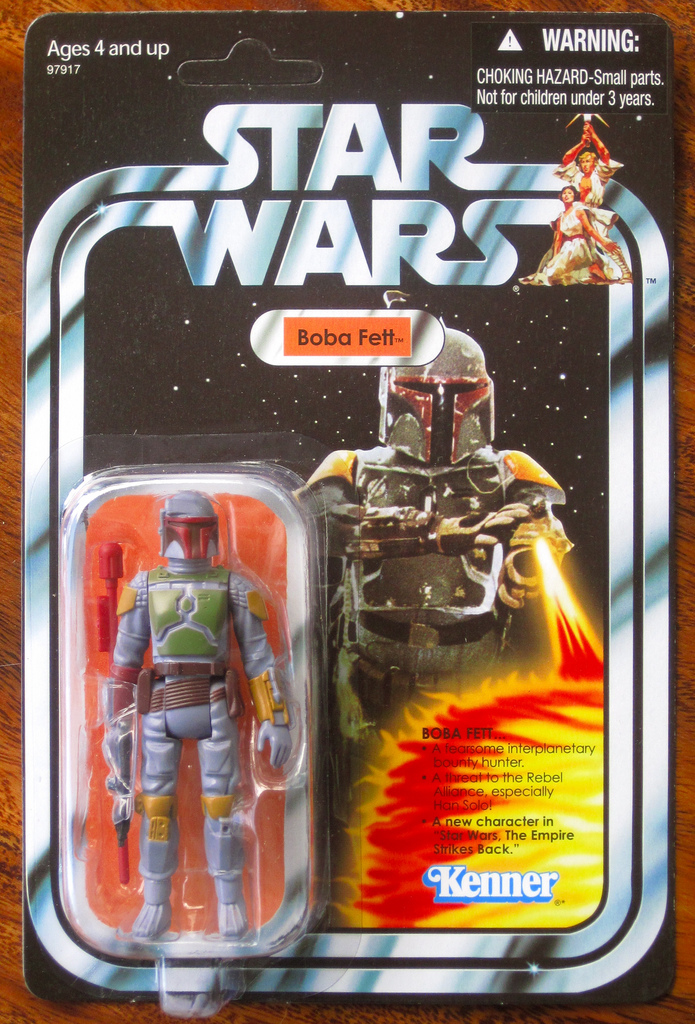
look on eBay last night confirmed to me that I would be able to acquire a vintage AT-AT (one of the centrepieces of the line) fully complete, with all parts, instructions, and a mostly intact box, for around £80, a price which is actually significantly less than the equivalent item’s modern RRP. A mint untouched version would be worth many times this. This also has the effect of increasing the value of boxed toys that are difficult to open without damaging the packaging. -
Lack of competition - “Collectibles” tend to make poor investments. The reason for the value of the aforementioned MISB toy is that almost no-one left them in that state. If a toy line is currently attracting large amounts of interest from collectors, then the chances are that down the line, your mint condition collectibles will have lots of competition from other items in a similarly perfect condition. If you are thinking to invest long term, then be particularly wary of items that are specifically marketed as collectibles, or which are primarily attracting attention only from adult collectors. A prime example of this was the Beanie Baby craze, which saw the price of the items shoot up immensely over a short period of time and then collapse to almost nothing. You should also avoid spending too much time and money acquiring limited edition or “shortpacked” chase items, which may be desirable for completionist collectors, but as an investment you may find that they fail to return the extra effort and expenditure required to track them down.
-
Demand - If buying new toys for long term investment, you need to think carefully about which toys are likely to appeal to tomorrow’s collectors, not today’s. Adult toy collectors tend to be driven by nostalgia, perhaps even the desire to acquire items that they are were unable to afford as a child. Look for toy lines that correspond to currently popular film and television properties, but also look at the toys themselves - are they well made? Do they seem to offer good play value? If you are attempting to acquire vintage collectibles then you need to have a good understanding of which products are the most desirable to the current collector and what they will be willing to pay for them.
-
Completion/Parts - As toys are played with, small parts and accessories tend to be lost. Obviously if you are keeping your collectibles in a sealed/mint state then this will not apply to your items, but it can still have a big impact on the strength of the opposition. Future collectors are much more likely to pay a premium for your MISB item if they are unable to find complete, unboxed items at a reasonable price. If you are buying vintage toys then you need to know what components should be present and which items may become easily damaged. Some items are very easily damaged and mint loose items will increase in value because of that. In particular some earlier types of plastic can easily be discoloured by sun exposure, or become brittle with age. Some paint types (especially metallic paints) can be prone to chip easily, and many items have parts that are easily snapped off.
-
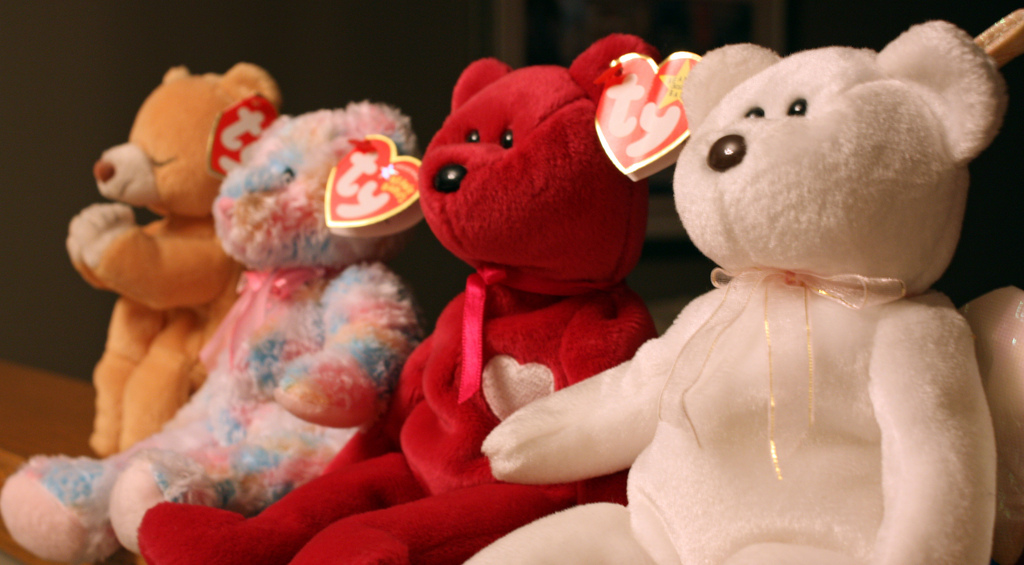 Rarity - Items are more likely to become valuable if they are only produced in relatively small quantities or for short periods of time. Long running properties will often see multiple versions produced of the same toy, often using identical moulds. For example, “Bumblebee” a popular character featured the recent Tranformers movies, might seem like an excellent candidate for collectible, apart from the fact that there have been over 100 separate versions of the character produced since the movie’s release in 2007 (demonstrated in the identification table here), and that’s just counting the movie version of the character. Be wary also of the recent trend of reproducing similar or identical versions of vintage toys in near identical packaging to the original. Make sure you can distinguish these from the original items. For example the previously mentioned AT-AT toy was made available in a “vintage” edition in 2012, featuring near identical packaging to the original.
Rarity - Items are more likely to become valuable if they are only produced in relatively small quantities or for short periods of time. Long running properties will often see multiple versions produced of the same toy, often using identical moulds. For example, “Bumblebee” a popular character featured the recent Tranformers movies, might seem like an excellent candidate for collectible, apart from the fact that there have been over 100 separate versions of the character produced since the movie’s release in 2007 (demonstrated in the identification table here), and that’s just counting the movie version of the character. Be wary also of the recent trend of reproducing similar or identical versions of vintage toys in near identical packaging to the original. Make sure you can distinguish these from the original items. For example the previously mentioned AT-AT toy was made available in a “vintage” edition in 2012, featuring near identical packaging to the original. -
Storage - Some items are more difficult to store in good condition than others and some packaging is produced using poor quality material which is easily scratched or bent. Such packaging can obviously increase the value the value of a mint condition item, but increases the difficulty for you of properly storing the item, and acquiring an item in good condition in the first place.
Our current investment tip
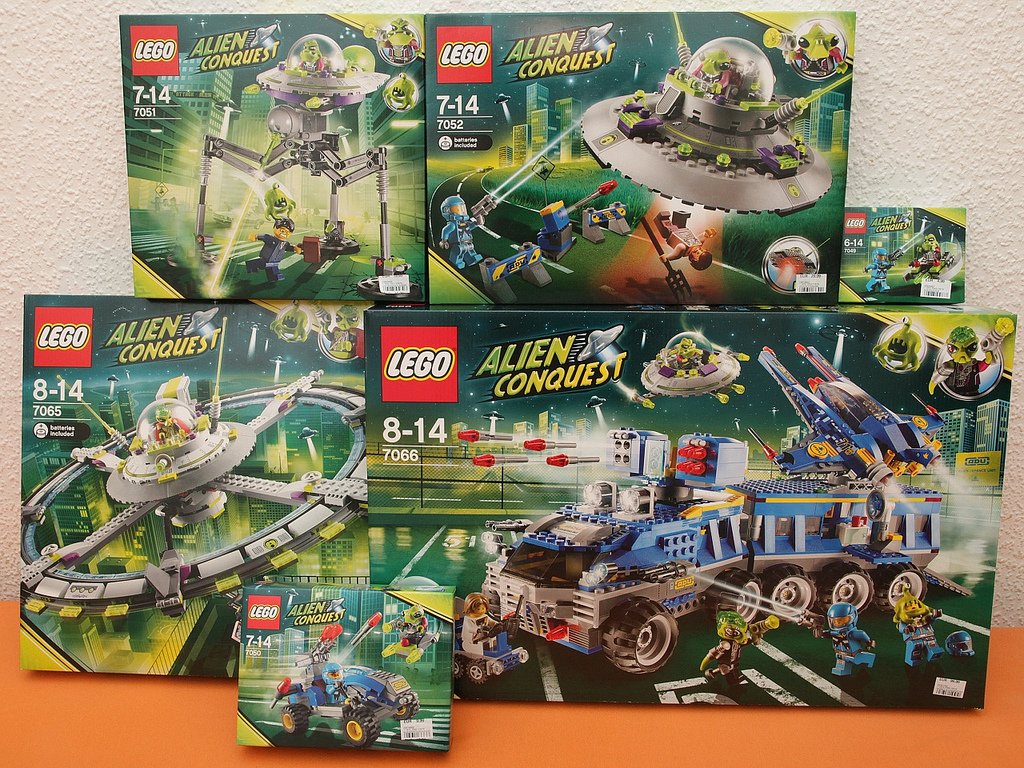 Currently I’d consider Lego toys to be a good example of an item that may be expected to increase in value. Lego toys are currently experiencing a dramatic upsurge in popularity among children. They are often released in themed ranges that contain unique components and mini-figures that are not typically re-released, and which are available for a relatively short period of time. They provide strong play value and are entirely composed of numerous small parts that are easily lost when the items are played with so future collectors will be strongly inclined to seek boxed items. Many Lego items have packaging that cannot be opened without damaging it. There are also relatively few adult Lego collectors compared to properties such as Star Wars or Transformers, and many of those who do exist will open the items in order to assemble the models rather than buying the items as an investment.
Currently I’d consider Lego toys to be a good example of an item that may be expected to increase in value. Lego toys are currently experiencing a dramatic upsurge in popularity among children. They are often released in themed ranges that contain unique components and mini-figures that are not typically re-released, and which are available for a relatively short period of time. They provide strong play value and are entirely composed of numerous small parts that are easily lost when the items are played with so future collectors will be strongly inclined to seek boxed items. Many Lego items have packaging that cannot be opened without damaging it. There are also relatively few adult Lego collectors compared to properties such as Star Wars or Transformers, and many of those who do exist will open the items in order to assemble the models rather than buying the items as an investment.
Buying goods
You need to start off here by deciding whether you intend to buy new toys, or focus on acquiring vintage toys. You also need to determine whether you want to “flip” the items for a quick sale, or store the items for long term investment, in which case you need to consider what the long term market will be for your product, as well as the logistics of storing your items in good condition.
-
Toy store - This is obviously a sensible starting point when looking for modern toys. You can often save a lot of money here by looking for opportunities to buy the remains of discontinued toy lines at a substantial discount, but make sure that you aren’t merely buying so called “shelf warmer” toys that remain simply because of their unpopularity. Keep an eye out for “store exclusives”, and less common variants, but as I said earlier, don’t hunt far afield for them, unless you are sure that their added value is worth the additional time and travel expenses.
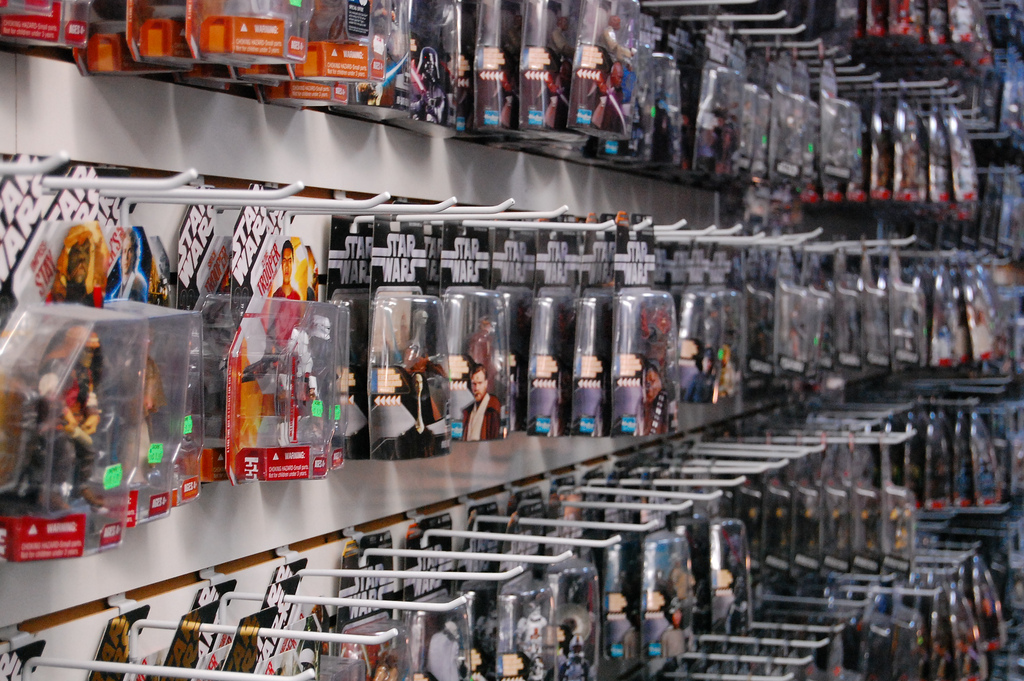
-
Online stores - There are a whole host of online specialty toy stores, but you can often expect to pay a premium over retail prices, especially for the most desirable items. Amazon is generally a poor place to buy toys from, as their marketplace model tends to encourage inflated prices, but there is the occasional bargain to be had. In particular, some chain stores maintain Amazon marketplace accounts to get rid of discontinued stock, and it can be well worth keeping your eyes on those “storefronts”
-
Auction sites - Sites such as eBay are probably your best resource for acquiring vintage toys, but you may find yourself competing against a lot of other buyers. The key here is to be patient and set yourself a strict budget for acquiring a particular item. Take advantage of search to find auction items that are badly labelled or categorised or which have misspelled descriptions, which will therefore attract less competition from other bidders. Look also for generic product descriptions; you are more likely to pay a bargain price for “Toy Spaceship” than for “Vintage Star Wars X-Wing”.
-
Car boot sales/ Markets - You are unlikely to find mint condition collectibles sitting in a car boot sale, but they can be a great place to find damaged items that can be bought for pennies and harvested for spare parts. Keep an eye out for boxes of loose small toys and accessories.
Keeping your investments safe
If you intend to store items for sale at a much later date, then you will need to keep them well packaged and away from damp conditions. If you intend to put items on display, you should avoid exposing them to direct sunlight which can quickly bleach the colours from packaging or even plastic. If you have young children or pets it may also be wise to insure that the items are kept well out of sight, lest they become a source of temptation.
It’s obviously a good idea to consider how you are going to store items before you start to accumulate them, not after. If you build up a significant stock of items you may need to insure them separately from your normal household coverage and even consider their impact as a fire hazard.
Selling your items
Eventually you are going to want to sell the items that you have bought in order to recoup your investment, ideally without eating into your profits to pay expensive selling fees, or using up too much valuable times.
-
eBay - eBay is the most common location for selling second hand goods right now. It’s fairly straightforward to list items and you can expect to shift competitively priced items quickly. It’s also an excellent resource for valuing items (make sure that you are searching for completed sales, to get a true impression of what prices items are actually selling at. When selling online, it’s worth paying careful attention to what times of day, week, and even year your items sell the quickest.
-
Amazon - The same factors that make Amazon a poor choice for buying toys can also mean that it can be a good place to sell them. Amazons listing fees are relatively high, but they are also payable on the sale of items, rather than on listing. This means that you can list items at a higher price for a long period of time and then only pay fees if you make a sale. However this doesn’t mean that it is sensible to adopt the completely exorbitant pricing of many marketplace sellers; remember that someone needs to buy the item!
-
Specialist Sites - Specialist sites and forums often have a section in which For Sale ads can be placed for free and you can often also list your current eBay auctions in the same place. Just make sure that you are following the community rules as to what and where you can post, lest you be banned from the community for spamming. If you are selling a lot of items within a specific niche you may even want to consider taking out paid ads with collectors periodicals.
-
Setting up your own website - You may even wish to set up your own website with listings of the items that you have for sale. This can be particularly effective if you have specialised in a particular niche. You could even experiment with using search ads to bring in traffic to your site.
-
Trade fairs and events - Many trade fares and niche events have a traders market that gives you direct access to dedicated collectors. The cost to acquire a stall at these events is often quite high, but items at these events often sell for a considerable premium over online sales.
Useful Resources
The following resources may be valuable:
General Sites:
- Like totally 80’s – Has a useful listing of many 80’s toy ranges
- Action Figure Archive – A useful resource for identifying action figures and accessories
- Toyhaven – Popular toy collecting blog
- Toy Collector Network – Contains a range of useful resources and links
- Collectors club of Great Britain – Publish a range of resources useful for investors, including price guides
Niche specific:
- Hornby Railways Collector Guide – Lots of information here
- Brickpicker – Lego investment site, lots of material and advice here targeted specifically at the investor
- Brickset Lego Guide – Detailed information about Lego themed set releases
- Fashion Doll Guide – Covers range of different fashion doll types including Barbie
- Barbie Value lookup – price guide for a range of Barbie toys
- All about old toys – A useful resource for genuinely vintage toys
- Collecting toy soldiers – Covers old toy soldiers
- Transformerland – Transformers price guide, particularly notable for its very useful unknown parts identification tool
- TFU.info – Detailed photographic identification guide to Transformers toys
- NCHWA.com Hotwheels price guide – contains details listing of Hot Wheels cars
- Rebelscum.com – Contains a detailed photographic record of Star Wars toys
- YoJoe.com – Exhaustive G.I.Joe toy resource, covers related international toys such as the UK Action Force
- ToysPeriod.com - Particularly notable for its excellent LEGO set reference, which includes instructions for many vintage sets.
- The Dinky Collector - Great images of an extensive Dinky toy collection, as well as a detailed restoration guide.
Attribution
Images via Flickr creative commons, credit to the following Flickr users:
http://www.flickr.com/photos/starwarsblog/511394788/sizes/o/in/photostream/
http://www.flickr.com/photos/puuikibeach/5527874530/sizes/l/in/photostream/


.svg)

